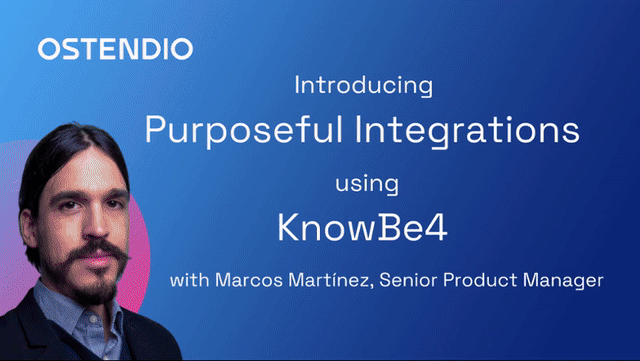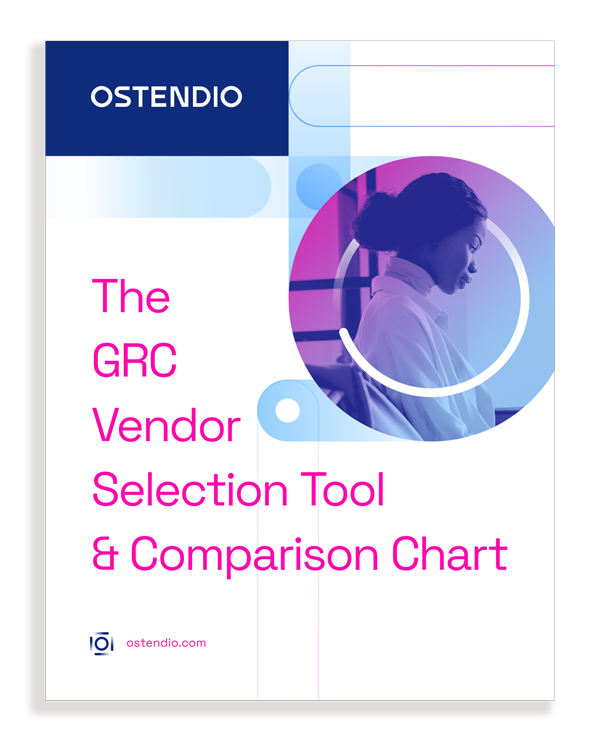[4 minute read]
Seamless integration between various platforms and systems is crucial for any information security management program. From cloud-based applications to internal networks, the ability to connect and communicate effortlessly across different technologies can significantly enhance the efficiency of proactively managing an organization’s sensitive data and reduce the risk of failing a security audit. However, behind the surface of what appears to be seamless integrations, CISOs face a myriad of challenges that demand their attention and expertise.
For CISOs and cybersecurity leaders, the importance of employee security training is undeniable, particularly when adhering to SOC 2 or ISO frameworks. Recent findings reveal that a significant 74% of breaches involve human error, underscoring the critical need for robust training against social engineering attacks and misuse. Setting up training programs can be challenging, especially when compounded by the difficulty of effectively tracking results.

Ostendio's Senior Product Manager shows the benefits of Purposeful Integrations using KnowBe4 as an example.
To address these challenges many cyber leaders rely on integrating training platform data into their GRC, risk management, or information security management programs.
What are Purposeful Integrations?
In a previous blog, we summarized the benefits and pitfalls associated with platform integrations. At Ostendio, we recommend that our clients and partners integrate with purpose to bridge evidence gaps, reduce risk, and give you the power to take action when it matters.
Managing integrations can be a challenging task. Integrating platforms can expose vulnerabilities and increase the risk of security breaches if not properly managed. CISOs must carefully navigate any integration to maintain a robust security posture.
Six challenges CISOs face with GRC platform integrations (and how purposeful integrations can help you overcome them!)
1. Complex KnowBe4 Integration Setup and MaintenanceChallenge: Traditionally, employees managing integrations invest weeks or months developing full integrations to platforms such as KnowBe4. They often require complex APIs and integration processes that require specific technical skills to set up and maintain. This can distract employees from other work, prolong timeliness, and lead to unforeseen costs.
Solution: CISOs can overcome this challenge by using a GRC platform, like Ostendio, which streamlines this process with its user-friendly interface, allowing for quick and effortless integration setup in just minutes.
2. Managing Training Data for Different Teams and UsersChallenge: Organizations often need help identifying which data to integrate and how to segment data access for different teams and users.
Solution: GRC platforms should enable integration managers to separate integration privileges from training management to selectively sync campaigns, enhancing security and simplicity. Look for a platform that allows configurable roles when selecting integration configurations.
3. Real-Time Data SyncingChallenge: Syncing users, training, and completion data between disparate cloud platforms can pose significant challenges, especially with one-way data flows that require additional time and resources for manual validation.
The key challenge is that most integrations only allow one-way data transfer, checking a box when an activity occurs but not enabling bidirectional data flow. In the case of KnowBe4, the inability to integrate edits or changes back into KnowBe4 from the integrated GRC or IRM platform creates challenges around keeping data properly aligned and up-to-date across both systems.
Solution: Find a GRC tool that allows syncing of training campaigns from KnowBe4 into the training module. Platforms, like Ostendio, simplify syncing KnowBe4 training campaigns into its platform through a robust integrated training module. New, existing, or even completed KnowBe4 training can transfer into Ostendio with campaign settings, user assignments, profiles, and statuses fully intact, all while auto-syncing for continuous alignment.
When users complete integrated training, both Ostendio and KnowBe4 update records in real-time, removing manual validation and reconciliation work. The robust management capabilities extend to training managers, who can see which trainings are created in Ostendio, track progress in both platforms and create a ticket for the owner of the training when the integration detects users that exist in one platform but not the other.
4. The Need for Centralized Training ManagementChallenge: Fragmented security training experiences and inconsistent user data are common concerns for organizations. Organizations risk redundant work managing user profiles across both systems or reconciling data via manual spreadsheets, resulting in inconsistencies and inaccuracies across platforms.
Additionally, security training managers might have to manually follow up and remind overdue users to complete assigned training. A lack of simple, unified training interfaces compels users to navigate multiple complex systems to finish and submit training.
Solution: Find a platform that allows KnowBe4 training to be centralized, creating a seamless experience for employees. Look for automated user reminders and evidence collection to further streamline access and follow-ups for managers, ensuring a cohesive training experience.
5. Remediating Security Training for ComplianceChallenge: Manually validating training against compliance frameworks is time-consuming and unreliable. Training and compliance managers struggle to validate whether completed employee training meets framework requirements, critical for audit readiness. Manual tracking across multiple systems makes visualizing training gaps inefficient with the risk of non-compliance being overlooked. Without consolidated training dashboards to display alignment status holistically, identify problem areas, and enable corrective actions, audit preparations become time-intensive with unreliable results.
Solution: Find a GRC tool that associates training completions with framework controls, providing unified visibility into deficient employee training. This enables efficient remediation, ensuring organizations stay compliant, secure, and audit-ready.
6. Centralized Reporting of Security Training ProgressChallenge: Siloed data often prevents organizations from gaining holistic insights. Organizations cannot efficiently analyze or report holistic, real-time training program effectiveness to key stakeholders for timely risk insights and informed decisions. Manual reporting processes are overly burdensome while generating static, backward-looking snapshots that fail to showcase progress demonstrating program maturity such as for audits.
Solution: Find a GRC tool that centralizes metrics, empowering managers with customizable reports and dashboards. These flexible analytics enable instant visibility into performance gaps, allowing organizations to make data-driven decisions and showcase progress.
Platform Integrations Become Simple, Streamlined, and Impactful
By using a GRC tool like Ostendio, integrating KnowBe4 becomes simple, reliable, and impactful. From streamlined setup and enhanced data management to real-time syncing and comprehensive analytics, Ostendio enables organizations to connect systems with purpose. Speak to an expert at Ostendio and find out how Purposeful Integrations could benefit your business.
Tags:
GRC
February 29, 2024


Comments